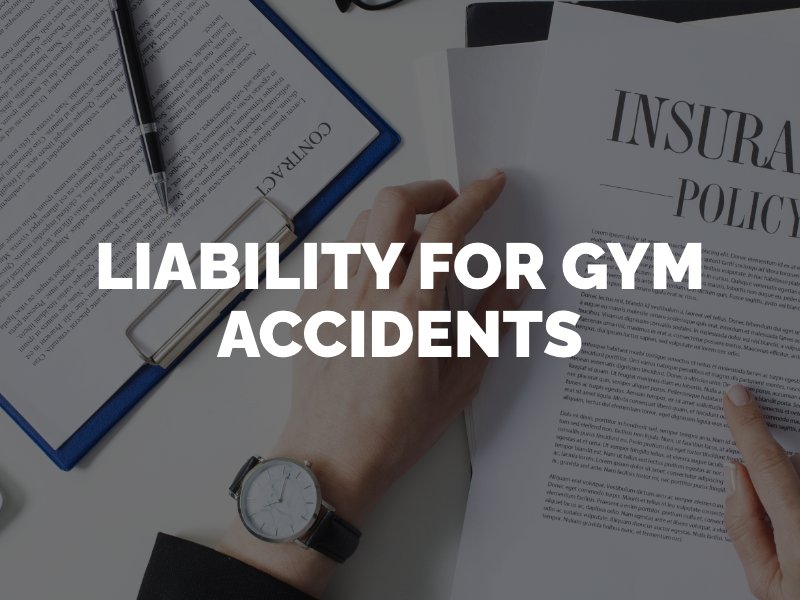Can the Gym Be Liable for an Injury?
If going to the gym ends with a serious injury, you may be entitled to financial compensation from the gym. However, this type of premises liability claim can be complicated by issues such as a liability waiver and the assumption of risk. Gyms often attempt to avoid liability for accidents and injuries that occur on their premises. You may need assistance from an Ontario personal injury attorney to receive a fair settlement offer.

Common Types of Gym Accidents
Gyms and other types of health clubs offer a variety of equipment to help members reach their fitness goals. However, this equipment can quickly be dangerous if it is not properly maintained. Faulty, broken or old equipment can malfunction while in use, resulting in serious injuries. Other common injury risks at gyms include slip and fall accidents, poorly maintained premises, security issues, spa area hazards, irresponsible gym members and careless employees.
What Responsibilities Does a Gym Have for the Safety of Its Guests?
In California, premises liability laws apply to all property owners. These laws require owners to take reasonable measures to ensure the safety of their premises for lawful visitors. Businesses, including gyms, owe the highest standards of care to visitors who enter the property for business reasons, such as gym members.
A gym’s duties of care include:
- Regularly inspecting the premises for new, unknown or hidden injury risks. Gym employees are expected to look for any dangerous conditions, such as obstacles on the floor, spilled liquids and broken exercise equipment.
- Repairing discovered risks in a timely manner. If a gym discovers or receives notice of a potential injury hazard, it has an obligation to remedy the dangerous condition within a reasonable amount of time.
- Warning members of potential hazards that may not be obvious. If the gym cannot remedy a hazard, it must post signs in conspicuous places warning members of the injury risk. This includes providing adequate instructions on how to safely use gym equipment.
In addition, as an employer, a gym has a responsibility to properly train its employees. Workers at the gym should know how to reasonably ensure member safety, such as with proper instruction and supervision on equipment. If a gym falls short of any of its duties of care, it could be held liable for a related member injury or death.
How Does a Gym Liability Waiver Work?
Before a member is permitted to join a gym, he or she typically has to sign a release of liability waiver. Also known as an assumption of risk agreement, this legal document protects the gym from responsibility in the event that a member is injured while on the premises.
If someone gets hurt participating in activities at the gym or using the gym’s equipment, the liability waiver may prevent the victim from suing the gym. There are exceptions, however, in cases involving recklessness, a wanton disregard for safety or the death of a member.
If the gym or one of its employees did not conduct itself properly based on California’s premises liability laws, this could be enough to allow the injured member to file a lawsuit outside of any liability waiver signed. Each case is unique; a victim’s legal rights depend on the circumstances.
Holding a Gym Responsible for Your Injury in California
Premises liability claims against gyms can be difficult to win. However, with help from an attorney, you can seek maximum financial compensation for your injuries and losses from all liable parties. This could include an equipment manufacturer, a property owner or a third party in addition to the gym. Discuss your specific case with an attorney at no cost when you contact Rose, Klein & Marias LLP.
